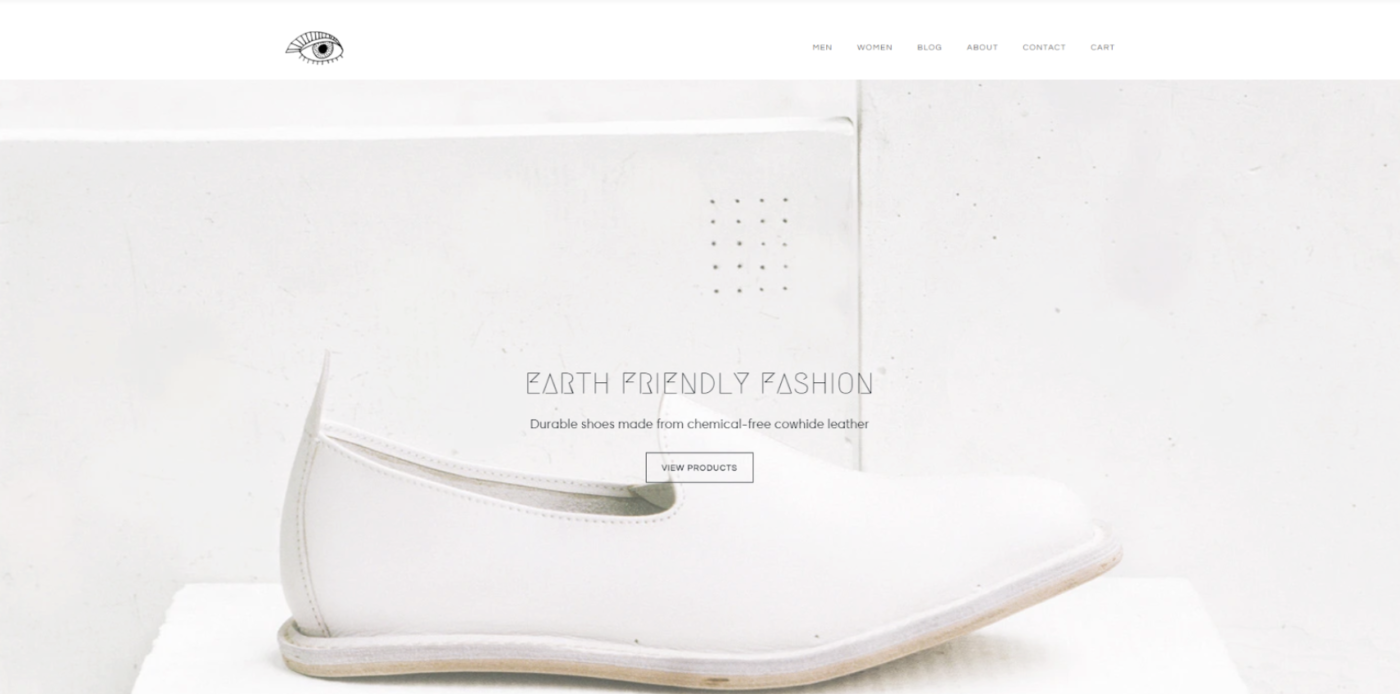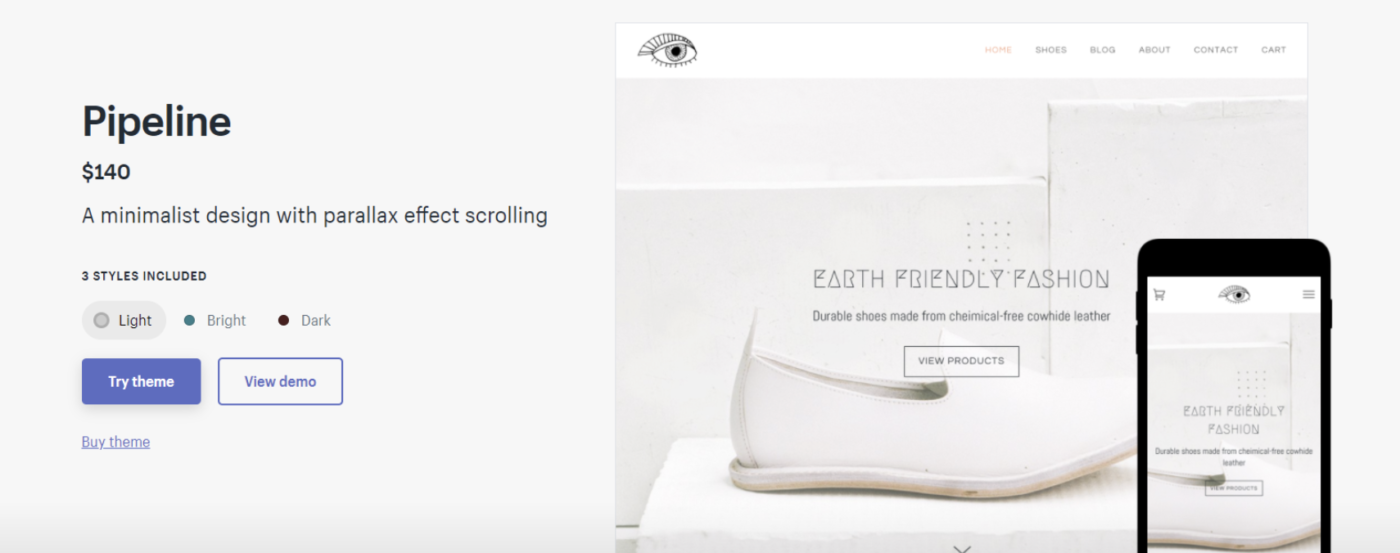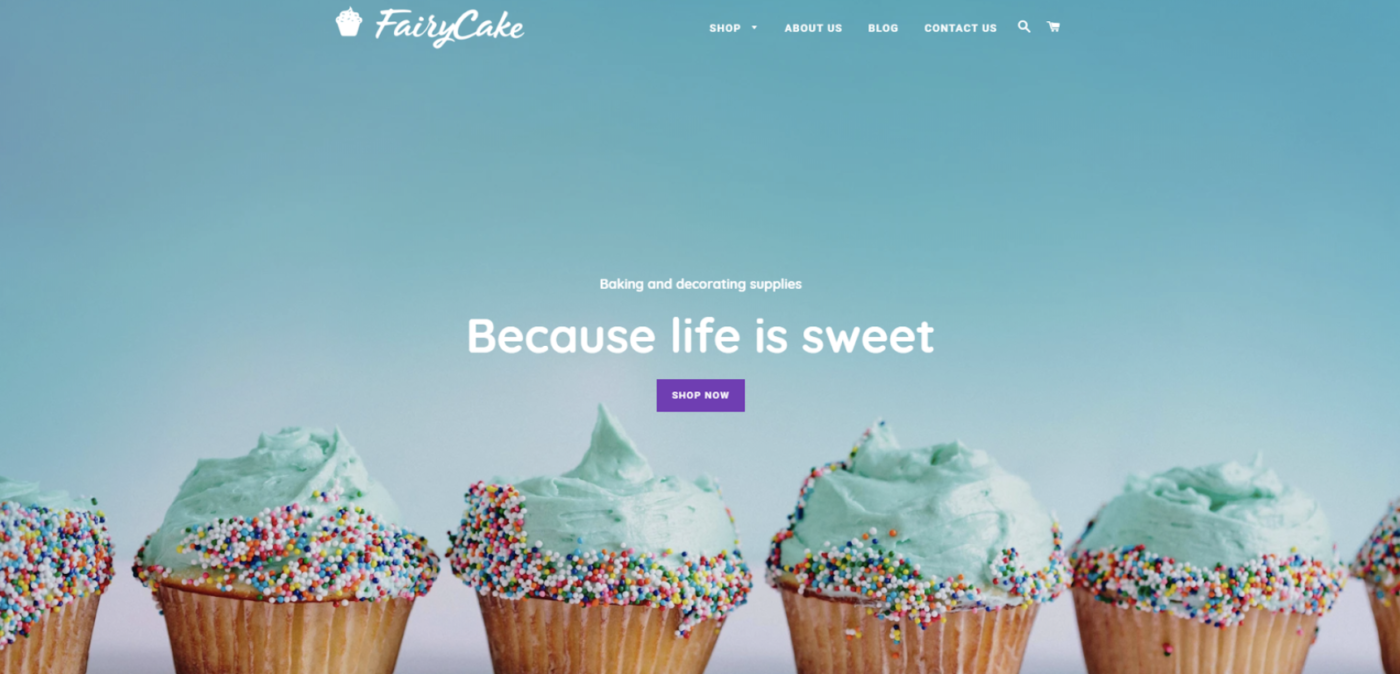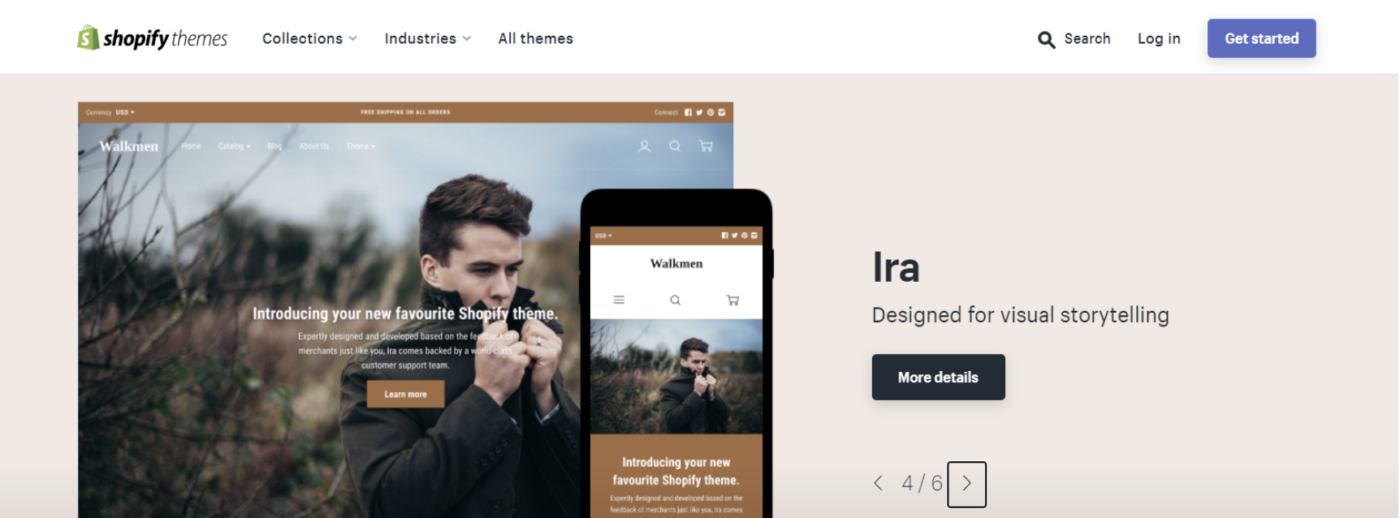
We're all familiar with the saying “Don’t judge a book by its cover”. But the hard truth is that, in today's digital world, consumers tend to act based on their first impressions with an e-commerce store's look.
It's hard to say we haven't visited a website and then leave it in a few seconds because it just looks… ugly. Not to mention millions of distractions in life that can drive visitors away from an uninteresting website.
As an e-commerce business owner, you need to capture customers' attention right from the start. And your website design plays a vital role in it.
That's why it is important to pick the best theme for your online store. The theme will influence the layout and overall look and feel of your store, as well as sending a positive message to make visitors purchase.
We will look at things to consider when picking the best theme for your e-commerce store and also some websites to find that perfect match – so your business and products can shine in a well-deserved light.
What is a theme

A theme for an e-commerce store is a pre-designed template that brands can install on their sites to deliver the best user experience possible for their customers.
This is different from building a store in the traditional way, which is done from scratch and often involves designers, web developers, or more. A theme can let you create a store's foundation within minutes, which you can build and change by yourself later.
Using e-commerce themes can be an affordable option for online stores as you can avoid web design and development costs. If you are looking for a way to create a beautiful, user-friendly website without extensive coding or hiring a developing agency, a theme is a great option for you.
The benefits of having the best theme
That said, you still might be wondering why you even have to pay for a theme. Why does it matter what colors your website has?
The fact is that your online store's theme is what encapsulates your brand, products, and services. By having an excellent visual presentation of your business and everything you stand for, your store immediately leaves a better impression with visitors.
Plus, the best theme can significantly affect your store's performance in terms of trustworthiness, conversion rates, retention rates, and more. Based on research, 38% of visitors will stop browsing a website if the layout is unattractive. And you have only about 5 seconds to leave an impression and tell what you have to offer before a visitor leaves your site.
Created by professional website designers, themes often have different research to support how they are styled.
For example, Internet users often scan a website in an F shaped pattern. This means websites with a strong header and a left sidebar are more intuitive for visitors. If you design your website from the beginning, you may not know which elements to include or not to optimize the site's performance.
Not to mention, theme options are endless, with many marketplaces and styles to choose from. You also get automatic updates and support to stay on top of best practices for modern design standards, technology, conversion, and SEO without even spending time checking.
How to pick the best theme for an e-commerce store

When picking the best theme for your e-commerce store, here are the steps that you should follow to check off every section of a suitable layout for your website.
1. Decide the essential features
A beautiful website doesn't equal conversions. Consumers today expect enhanced UX features when they shop online. They want a good shopping experience out of your store, not just flashy pictures or videos. So, take a step back and brainstorm. What essential features does your online store absolutely need to have?
Here are some of the features that the best theme designs should include:
- Simple checkout process
- Mobile-responsive design
- Full-width design
- Cross-sell and upsell features (best-selling products, catalog, recommended items, etc.)
- Fast loading times – less than 3 seconds on any device
- Clean code building
- Compatibility with e-commerce apps and plug-ins
- Product detail variation features
- Navigation and guided search (mega menu).
If you have anything to add, make a list to keep by your side in the next steps while you browse different types of themes to select the best option based on your requirements.
2. Research competitors' stores
Do you want to stand out among your competitors? Then at this step, do some research to see what they have out there. By researching your competitors' online stores, you will have two insights. First, you will get some idea of what features to expect in your industry. Second, you can learn what to avoid from bad-designed stores.
Use this knowledge of your competitor to choose a theme that allows you to create an outstanding and unique user experience for your brand. There are some tools that you can use to detect a theme used by a website on a specific platform, for example:
- Shopify: Shopify Theme Detector
- WordPress: WordPress Theme Detector
- Other platforms: BuiltWith
3. Think of the content strategy
At this step, you'll need to think about how to approach your content. You may be thinking, why is content important to my website design?
Knowing what type of content your website will display can help your business determine which themes will best support it. After all, you are aiming for great user experience, and content is what visitors will consume the most out of your site.
Here are some content materials to consider:
- User-Generated Content (UGC).
- Blog posts.
- Product images and videos.
- Social media.
- Featured image.
The key is to understand your preferred content. What you're going to add pictures and text to your website, and will your theme support those with available spots and look good?
If your theme focuses on huge beautiful photos with text overlays and you don't have anything of that sort, you may want to move on to a simpler option. Testing and experimenting are essential to get things right.
4. View your products on the theme
As you browse through different themes, you should also test how your product looks on each template. Theme designers often insert premium product images into their themes, which will look beautiful and perfectly match their style.
You can try to recreate this using images of your own products, but if you are not familiar with the design, the result may not be the same as what you see in the theme preview. For example, the templates often have products with white background and high resolution, which may be limited due to your resources.
If you currently don't have high-quality product images, it's best to avoid templates with large sections of the product image. It is not about picking the best-looking theme; it is about finding the best theme for your product and brand.
5. Make sure all brand elements look good
Your website should be self-explanatory so that potential customers can understand your product quickly and take action faster. This leads us to another important task: during the shopping experience, customers should have a clear sense of your brand. There are a few things to note about brand elements, such as:
- Your logo should look clear with the shape fitting the theme's layout
- The theme's color palette should match your brand guidelines
- Call-to-action buttons are really important, make sure your prospects can't miss them
- Other social media profiles should be accessible with the theme layout
- Call or message buttons are a good feature, but they should match your design as well
6. Check the theme support
Support is another important factor that you need to consider when deciding on your best theme. Free or paid, your theme needs to have direct support from the developing team. So if you end up with any problems, you can contact their teams and ask for help.
Websites to find the best themes for e-Commerce

There are many e-commerce platforms available nowadays, so you should be able to find theme marketplaces and pick the most suitable options. Here are some websites you can check out:
- Shopify Theme Store: With over 70 beautifully-designed free and paid themes, Shopify Theme Store is a great place for store owners to kick start their businesses. The support is great too.
- WooCommerce Theme Store: Built on WordPress, WooCommerce has much flexibility for stores to design the sites with 20 free and paid themes available.
- ThemeForest: Having thousands of website templates and themes, ThemeForest has themes for many platforms to choose from and suit many types of e-commerce industries.
- Template Monster: Same as Theme Forest, Template Monster is a general theme marketplace with over 16 thousand templates for many e-commerce platforms.
Final advice
Building an e-commerce store isn't a simple process; you may face many obstacles to create a truly great customer experience. But having a beautiful and functional template can be a good starting point. With this article on how to pick the best theme for your e-commerce store, you can create an amazing-looking website that is enjoyable and profitable.
Thanks for reading, and let me know if you have any questions in the comments section!




All these 6 ways are really informative. It helps me to pick the best theme for my e-commerce store.
Wonderful information, thanks a lot for sharing the kind of content with us.